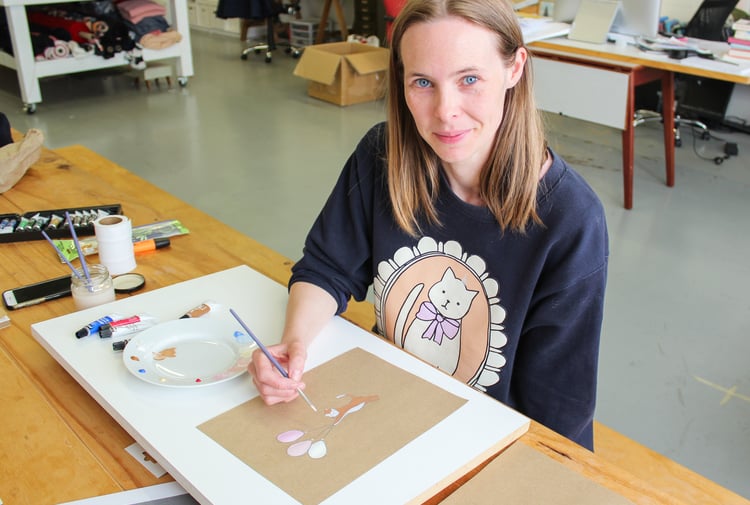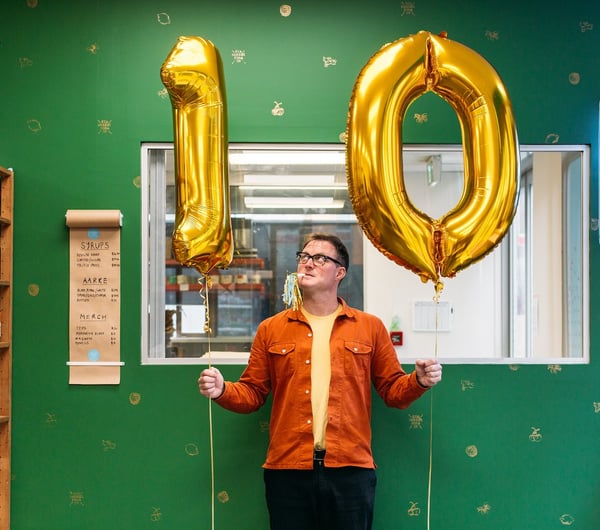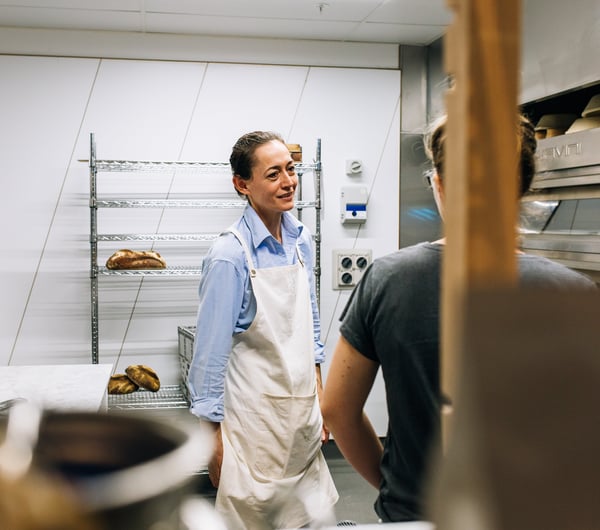Making Clothes with Heart and Soul

Rachel Easting and Anjali Burnett
Rachel Easting and Anjali Burnett know a thing or two about fashion, after all, they've been running their company and brand Twenty-Seven Names since 2006.
Brought to you by Counter Journal, NZ’s newest independent magazine featuring the most interesting stories you never knew you wanted to read. Find out more at counterjournal.co.nz.
The name 'Twenty Seven Names' refers to the people who helped to get Rachel and Anjali's label off the ground; a small insight into their humble nature and a hint at the honesty the brand relies on—right through to the transparency of their supply chain and manufacturing processes. The respect and reputation they have earned themselves as a fundamental part of the New Zealand fashion industry can be attributed to the quality and production of each garment the brand produces. Using high end materials, TSN manages to remain responsibly sustainable, ethical and made in Aotearoa.
What inspired you to launch Twenty-Seven Names and how did it all start?
Anjali: Rachel and I met at primary school, and it was a classic romance. She taught me about Manet, Picasso, and Kruger, while I taught her an appreciation for Outkast, Lauryn Hill, and Mobb Deep. The first time I saw her she was wearing a Winnie the Pooh tee shirt and bike shorts—so we’ve been through a lot together. We went to polytech and studied art (Rachel) and fashion (me) and launched our brand soon after.
Those early days were all hustle, Rach and I did everything. Over the years we’ve built a small but dedicated team to help us, but our vision is still the same. We make beautiful clothing, and we put our heart and soul into it. What’s important to us now and for the future is that we’re contributing in a positive way to the lives of the people who make, sell and wear our clothes.
You launched TSN back in 2006, how has the NZ fashion landscape changed over the past thirteen years?
Anjali: Bloggers are called influencers now.
What inspired the ‘A Cat May Look at a Queen’ collection?
Anjali: The collection is a letter to our younger selves—it celebrates taking chances, having confidence in your own ideas and remembering that no one is you, and that is your power.
Is this your first foray into using an analogue process (i.e. hand painting) to create a print?
Anjali: Rachel has been hand drawing our prints since 2007. She is an amazing illustrator, so every collection we try to celebrate that. At art school Rach did a series of photographs on a 2.3 megapixel camera (top of the line back in 2002). Our first print was a drawing of her lips and teeth with lipstick wiped off. Imagine Andy Warhol meets Pipilotti Rist.
What inspired this approach?
Anjali: When you have a talented artist on the team you can’t help but want to share their talents with the world.
What is it about this kind of process that appeals to you?
Rachel: My photoshop skills are circa 1998, so give me a pencil or paintbrush any day. My major at art school was sculpture, but if it had been an option drawing would have definitely been my pick.
Walk us through the steps involved in creating this print.
Rachel: First I drew some little sketches of cats with bouquets of balloons on refill with a biro. Once I had the motif right, I photocopied them and enlarged them to the size I wanted to paint them at. I then traced those with pencil onto brown paper and painted several iterations of them: neat, messy, acrylic, oil—until we decided that I’d nailed it. We scanned these in and Sally, our graphic and textile designer, laid them up so we could play with scale and colour.
Why do you think it’s important that these types of traditional skills are practiced and celebrated?
Rachel: For me, something that has been hand-made or hand-sewn or hand-drawn has an emotion and texture to it that I just love. Maybe I’m a bit old-fashioned in that way, but it’s an important creative outlet in my life.
What’s your favourite piece from the collection?
Rachel: The Mana dress. We really enjoyed the creative process of pattern-making with this garment. We worked through multiple versions of toiles (mock ups), which is a really fun way to design because rather than just drawing something and then trying to make it, you can really use the process of sewing to develop the idea in three dimensions.
Need to know:
Twenty-Seven Names
Stores in Wellington, Newmarket & Ponsonby
www.twentysevennames.co.nz
@twentysevennames


